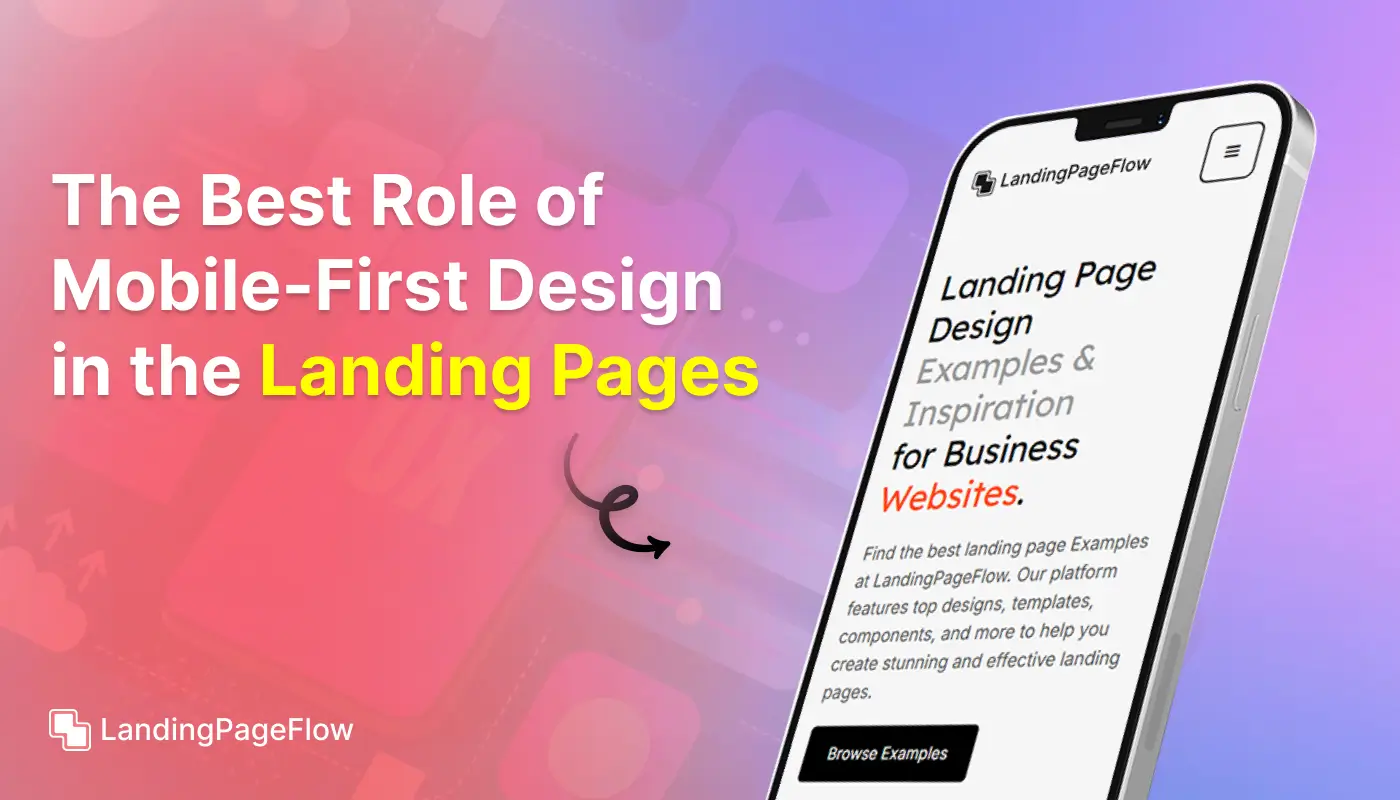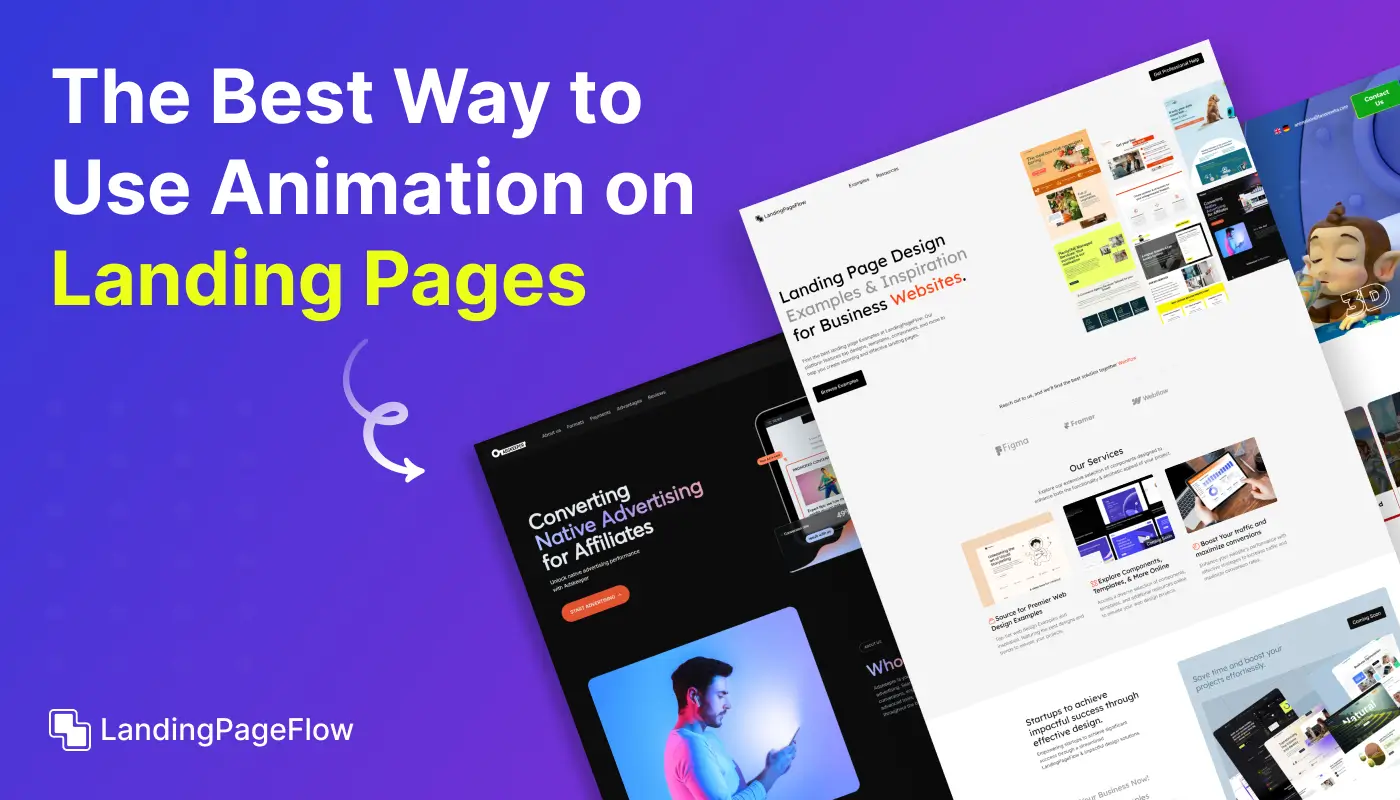How to Turn Your Website Visitors into Bookings with a Landing Page

November 14, 2025
Particularly intentionally designed, a landing page can convert infrequent visitors into valuable reservations. Businesses often overlook how much impact design and clarity can have on user decisions.
By focusing on booking-specific goals, you can shift traffic into tangible results.
Strong headlines, compelling visuals, and persuasive calls-to-action guide users toward making a commitment. Each element should work together to reduce hesitation and inspire confidence.
Clear structure ensures visitors know exactly what step to take next. Consistency across messaging builds trust while strategic layouts emphasize urgency and exclusivity.
In order to guarantee that the booking process functions properly on all devices, mobile responsiveness is equally important. This type of landing page design turns into your conversion engine, not just a page.
"Looking to maximize your website results?
Get the proven landing page playbook & start driving bookings."
Table of Contents
- Understanding the Importance of a Booking Landing Page
- Key Elements For a High-Converting Booking Landing Page
- Clear Call to Action (CTA)
- Booking Form or Integration
- Engaging Visuals
- Testimonials and Social Proof
- Service Descriptions
- Trust Signals
- Best Practices For Optimizing Your Booking Landing Page
- Keep It Simple
- Focus on User Experience
- Mobile Optimization
- Fast Load Times
- How to Write Persuasive Copy For a Booking Page?
- Crafting a Compelling Headline
- Focusing on Benefits, Not Features
- Creating Urgency and Scarcity
- Design Tips to Enhance Conversions
- Visual Hierarchy
- Clear and Consistent Design
- Using Action-Oriented Language
- How to Integrate Booking Features on Your Landing Page?
- Booking Software Integration
- Seamless Payment Systems
- Confirmation and Follow-Up
- Common Mistakes to Avoid on a Booking Landing Page
- Examples of High-Converting Booking Landing Pages
1. Understanding the Importance of a Booking Landing Page
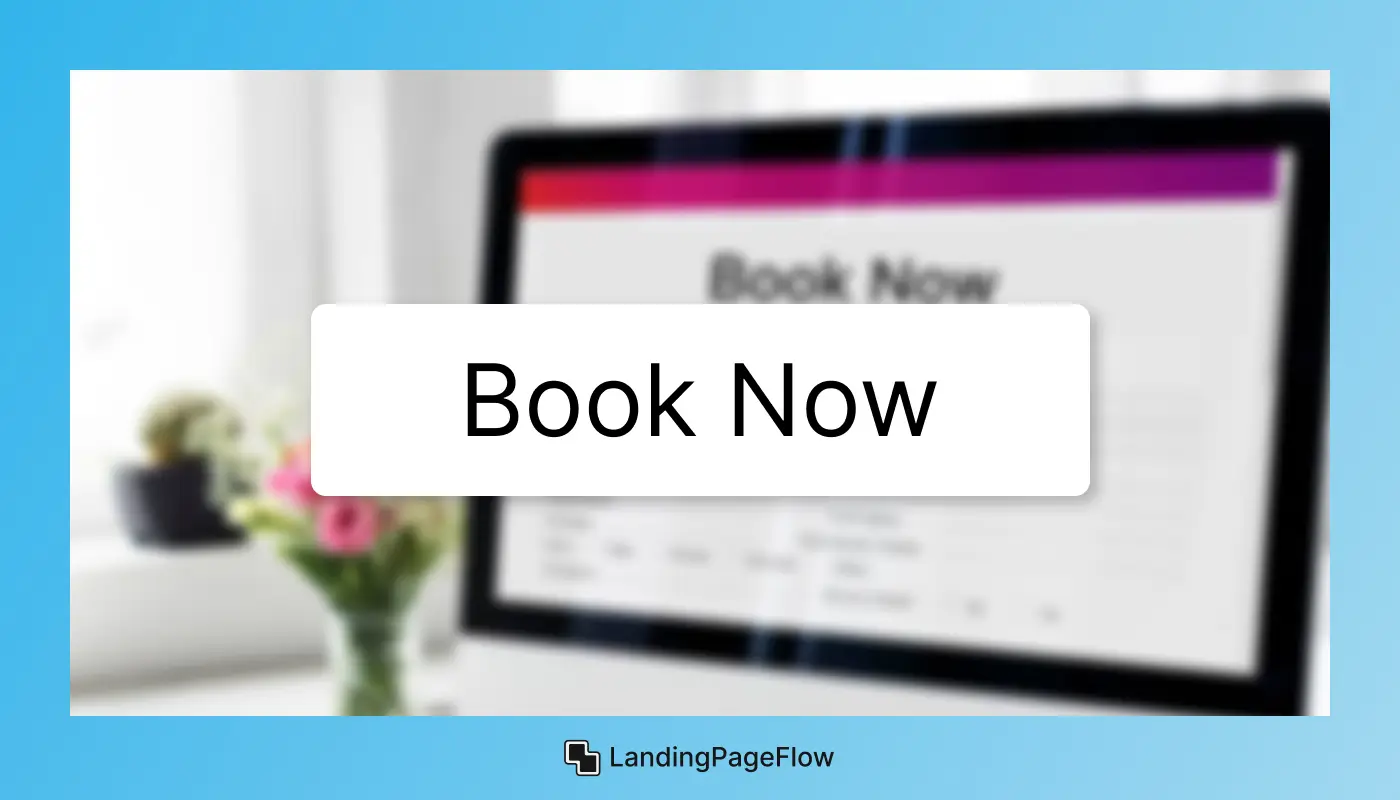
A booking landing page is a targeted page designed to encourage website visitors to take a specific action—booking a service.
Unlike regular pages on your website that provide information, a booking landing page should focus solely on making the conversion as easy as possible.
By removing distractions and streamlining the booking process, you can increase your chances of turning visitors into paying customers.
2. Key Elements For a High-Converting Booking Landing Page
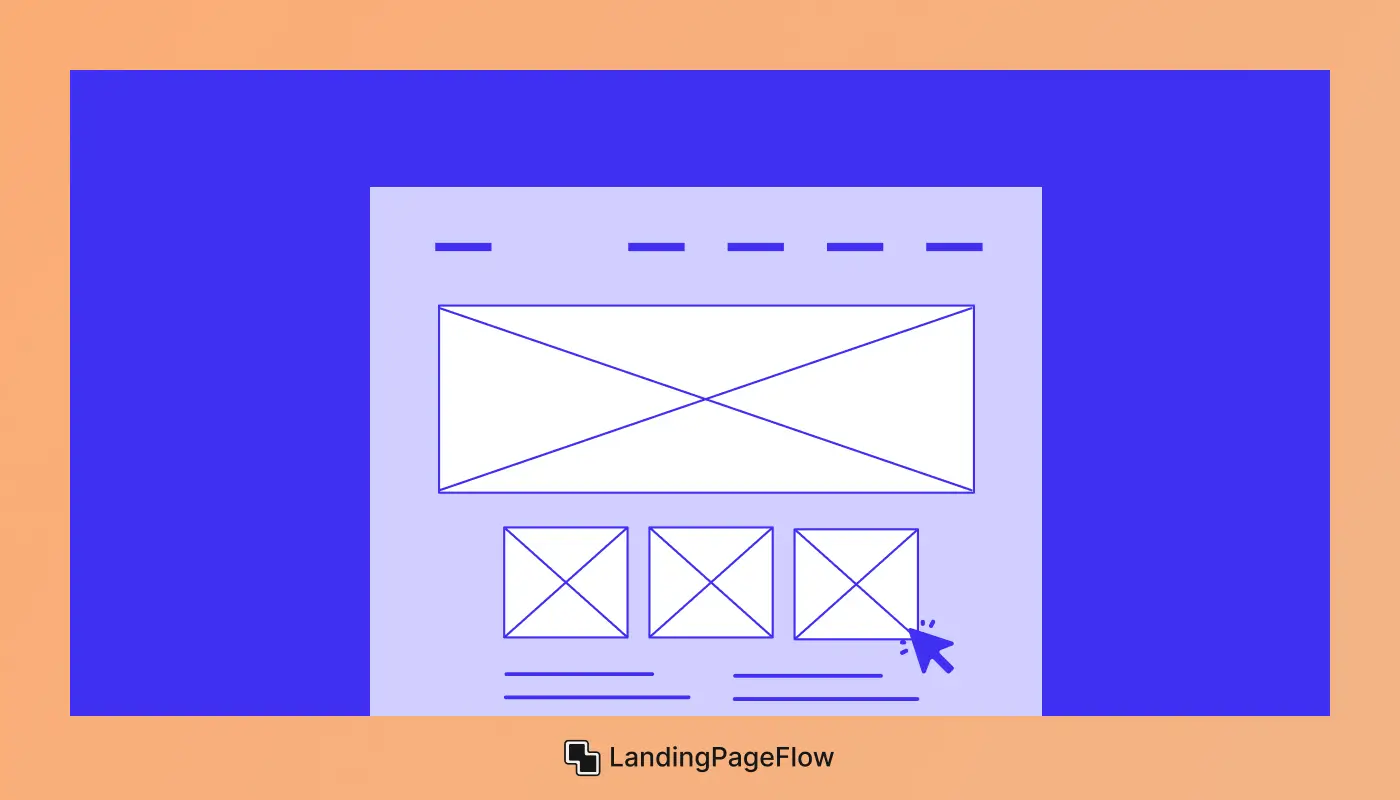
Clear Call to Action (CTA)
The CTA is the centerpiece of your landing page. It should stand out and tell visitors exactly what action you want them to take. Make your CTA as clear and concise as possible.
Examples of good CTA buttons:
- "Book Now"
- "Reserve Your Spot"
- "Schedule Your Appointment"
Your CTA should be easy to spot and repeated throughout the page. Place it near the top, in the middle, and at the bottom of your page so visitors can easily act when they’re ready.
Booking Form or Integration
The main goal of your booking landing page is to collect booking information from visitors.
This is where the booking form comes into play. It should be simple and easy to fill out. A long, complicated form can deter potential customers.
If you’re using third-party booking software (like Calendly, Acuity, or a custom solution), integrate it directly into your landing page. Make the booking process as seamless as possible, with minimal steps.
Tip: Only ask for essential information, like the visitor's name, contact information, and preferred date/time.
Engaging Visuals
Visuals are a key part of any landing page. They can build trust, communicate your brand personality, and show your visitors what they can expect when they book your service.
Use high-quality images or videos that reflect your business—whether that’s a tour of your premises, a before-and-after gallery, or happy customers.
Tip: Use images that show real people using your services to create authenticity and emotional engagement.
Testimonials and Social Proof
Adding testimonials or reviews from past customers adds credibility and trust to your landing page.
Positive feedback from others can help sway potential customers into booking with you, as they can see that others have had a positive experience.
Tip: Display customer reviews prominently near the CTA or booking form, along with any relevant certifications, awards, or partnerships.
Service Descriptions
Your landing page should also briefly explain the services you offer and why they are valuable. Focus on the benefits of your service rather than just listing features.
Make it clear what the visitor will gain by booking your service, and why they should choose you over competitors.
Tip: Keep your service descriptions concise and easy to read. Break up the text with bullet points, images, or icons to make it skimmable.
Trust Signals
Trust signals, such as security badges, industry certifications, and guarantees, can help alleviate any concerns a potential customer might have about booking online.
Let them know that their personal information is secure and that they’re in safe hands when booking with you.
Tip: Display trust signals like SSL certificates or payment gateways to make visitors feel confident about their decision to book.
3. Best Practices For Optimizing Your Booking Landing Page
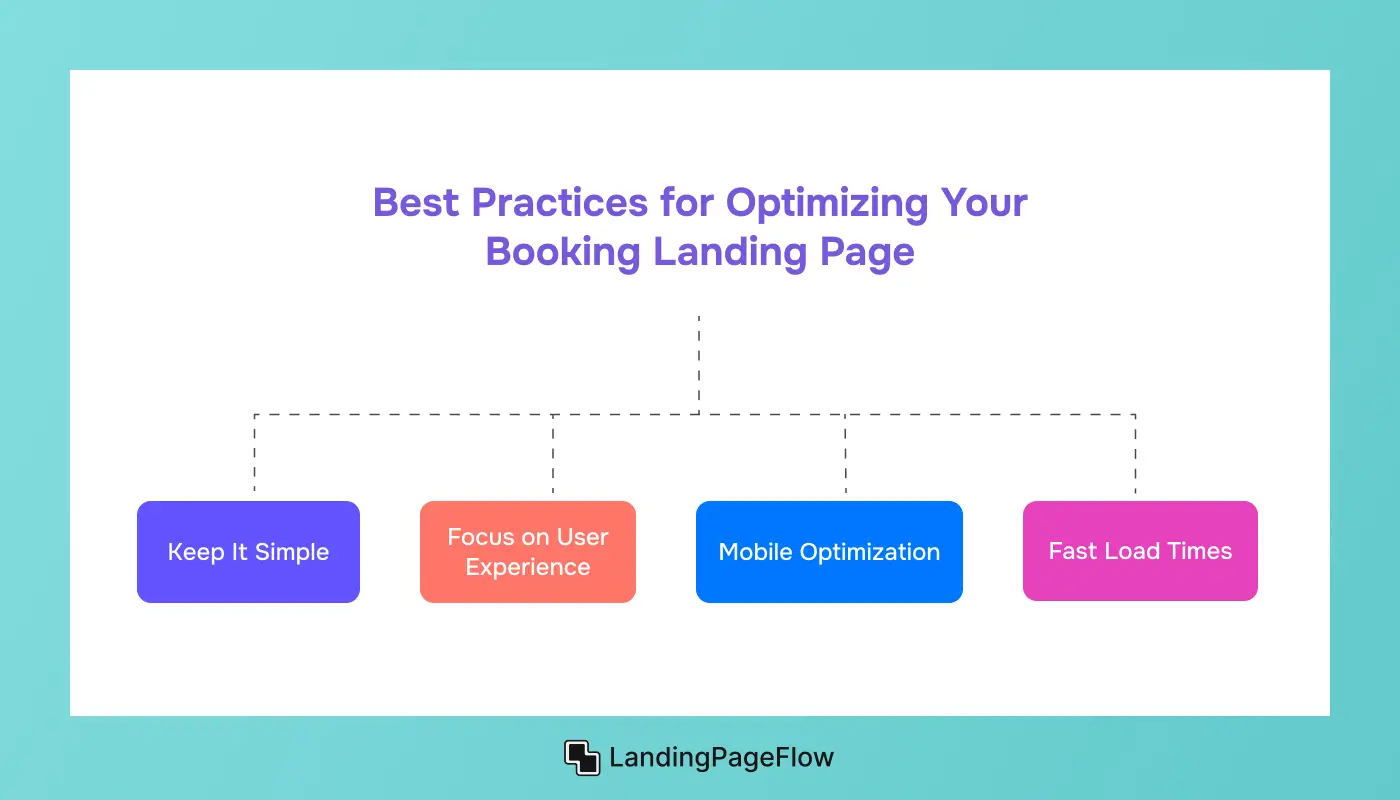
Keep It Simple
A cluttered page with too much information or too many options can confuse visitors and lower your conversion rate. Stick to one objective—encouraging visitors to book your service. Focus on essential information and remove any unnecessary distractions.
Tip: Make sure your booking form is the focal point of the page.
Focus on User Experience
Make sure the user experience is seamless. Your landing page should be easy to navigate, with clear sections, well-organized information, and a logical flow. Visitors should always know where to look next and how to take the next step.
Tip: Use simple navigation and minimize pop-ups or auto-play videos that might frustrate users.
Mobile Optimization
More users are browsing and booking services from mobile devices. Ensure your landing page is mobile-friendly with a responsive design. The booking form should be easy to fill out on a smaller screen, and the CTA should be easy to tap.
Tip: Test your landing page on multiple devices to ensure it looks great and functions well on all screen sizes.
Fast Load Times
A slow landing page can increase your bounce rate, causing potential customers to leave before they have a chance to book. Optimize images, minimize heavy scripts, and use a reliable hosting service to keep your page loading quickly.
Tip: Use tools like Google PageSpeed Insights to test and optimize your page's load speed.
4. How to Write Persuasive Copy For a Booking Page?
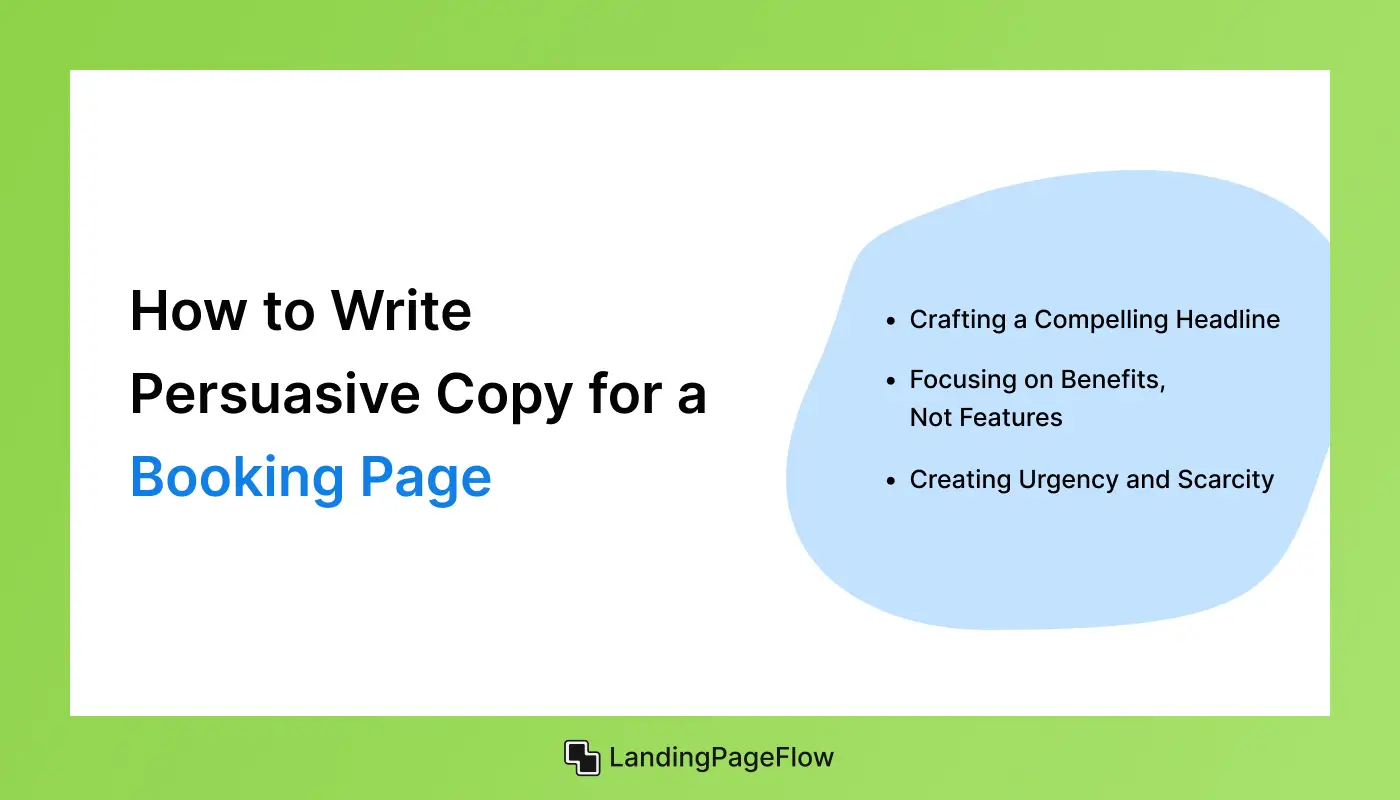
Crafting a Compelling Headline
Your headline should immediately capture attention and clearly communicate the value of your service. Focus on what problem you solve and how your service will make the visitor’s life better.
Example: “Get a Relaxing Massage That Relieves Stress—Book Your Appointment Today!”
Focusing on Benefits, Not Features
Instead of listing the features of your service, focus on how it will benefit the customer. For example, don’t just say “Full Body Massage” – say, “Experience a Full Body Massage That Eases Muscle Tension and Promotes Relaxation.”
Creating Urgency and Scarcity
Urgency and scarcity can encourage visitors to act quickly. Use language that creates a sense of limited availability, such as "Limited Spots Available!" or "Book Today and Get 20% Off Your First Appointment."
Tip: Offering time-limited promotions or discounts can also push visitors to make a booking.
5. Design Tips to Enhance Conversions

Visual Hierarchy
Use design elements to guide visitors through the page in a logical order. Your headline should be the first thing they see, followed by your CTA, booking form, and other supporting information. Use bold text, colors, and whitespace strategically to make each section easy to navigate.
Clear and Consistent Design
Make sure the design is clean, with enough whitespace to make the content easy to digest. Your CTA buttons should be consistent in color and placed in a way that makes them stand out. The page should feel cohesive and align with your brand identity.
Using Action-Oriented Language
Throughout your page, use language that directs visitors toward the action you want them to take. Instead of passive phrases, use direct, action-oriented verbs.
Example: "Claim Your Spot Now" instead of "Learn More."
6. How to Integrate Booking Features on Your Landing Page?
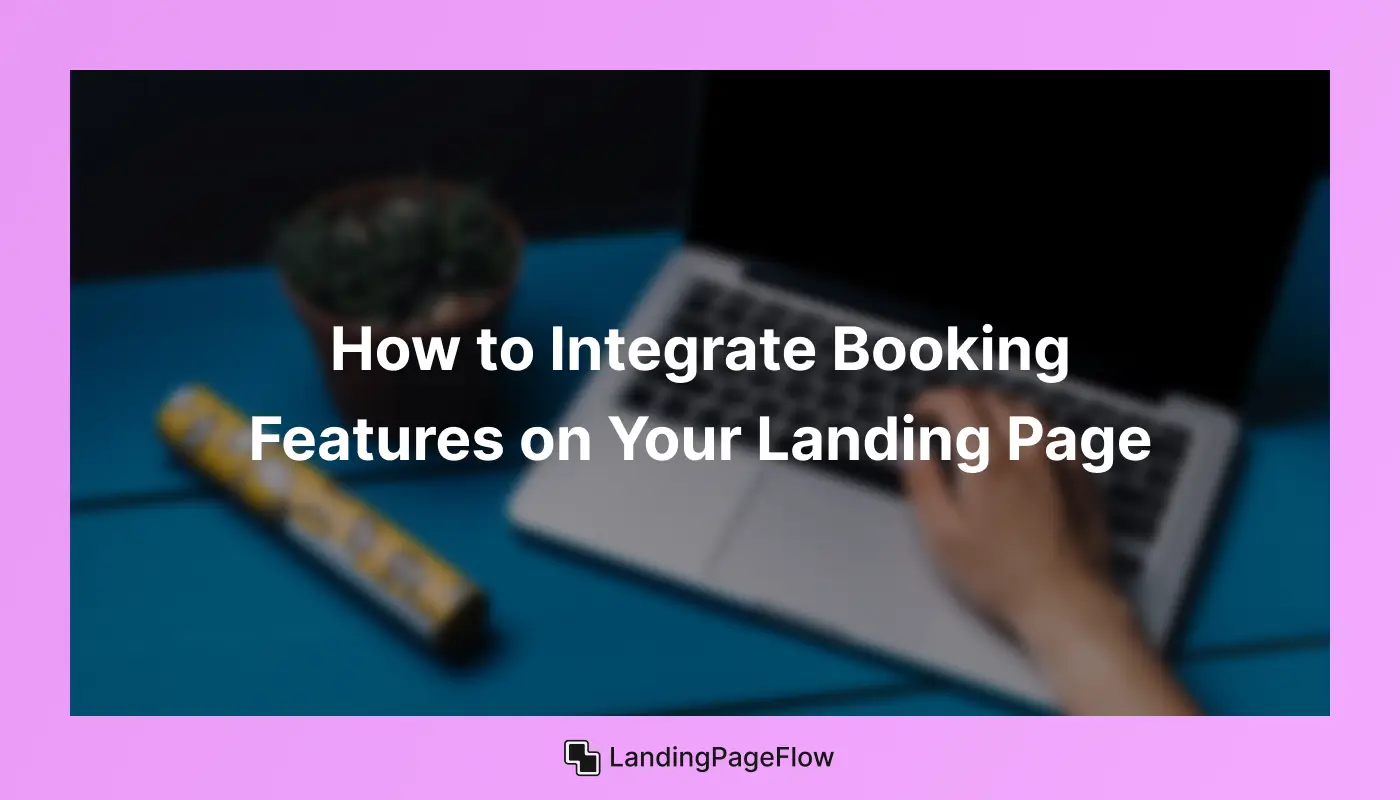
Booking Software Integration
Integrating booking software like Calendly, Booksy, or Acuity can streamline the booking process. These tools allow customers to select available time slots, view pricing, and even pay—all in one place.
Tip: Choose a booking platform that integrates well with your website or landing page and provides a smooth user experience.
Seamless Payment Systems
If you’re collecting payment as part of the booking process, integrate a secure payment system like Stripe or PayPal. Make sure the payment process is straightforward and trustworthy.
Tip: Display the accepted payment methods clearly to reassure visitors that their payment details are secure.
Confirmation and Follow-Up
Once a visitor books your service, send them an instant confirmation, whether via email, text, or an on-screen message. Follow up with a reminder closer to the booking time.
Tip: Automate confirmation emails to save time and enhance the customer experience.
7. Common Mistakes to Avoid on a Booking Landing Page
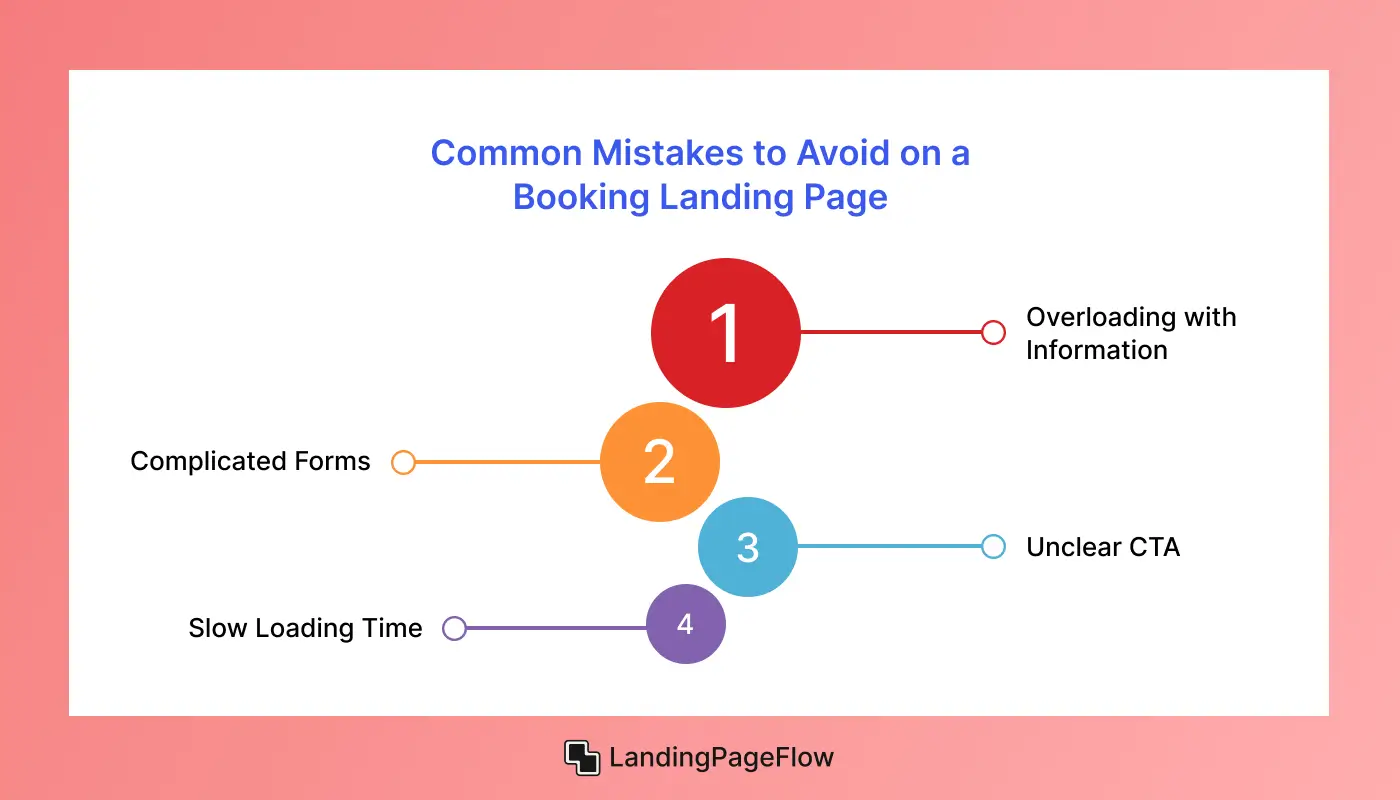
- Overloading with Information: Keep the focus on the booking form and the most important details.
- Complicated Forms: Simplify the booking form to only include essential fields.
- Unclear CTA: Your CTA should be easy to spot and action-oriented.
- Slow Loading Time: Optimize your page for speed to avoid high bounce rates.
8. Examples of High-Converting Booking Landing Pages

Check out the following examples to see how others have successfully designed their booking landing pages:
- Spa Service Page: A clean, serene design with a straightforward booking form and customer testimonials.
- Fitness Class Landing Page: A CTA encouraging visitors to book a class, alongside details about the benefits of the program and available time slots.
Conclusion
A well-built landing page can mean the difference between a lost visitor and a confirmed booking. Small adjustments to layout, messaging, or call-to-action can spark big improvements. The key lies in making the experience seamless, persuasive, and trustworthy.
Testing and refining ensure that your page continues to meet audience expectations as trends evolve. Businesses that prioritize clarity and user-centered design consistently see higher conversion rates.
Your landing page should not only attract attention but also encourage decisive action. When crafted properly, it becomes a growth tool that keeps working in the background.
Esteem not simply possible to convert visitors into reservations; it's a process that should be mastered.

FAQ
1. Why do I need a landing page for bookings?
A landing page focuses visitor attention on one clear action - booking - making it easier to convert traffic into clients.
2. What makes a booking landing page different from a normal website page?
Unlike regular pages, booking-focused landing pages remove distractions and highlight calls-to-action that guide users toward scheduling.
3. How can I make my landing page trustworthy for new visitors?
Including testimonials, secure booking badges, and clear guarantees helps establish credibility and reduce hesitation.
4. Do visuals really impact booking conversions?
Yes, high-quality images and relevant visuals boost user confidence and make the offer feel more professional and appealing.
5. Should my landing page be optimized for mobile bookings?
Absolutely. Many bookings happen on mobile, so responsive design ensures a seamless process across all devices.
6. How do I measure if my landing page is effective?
Track conversion rates, click-throughs, and completed bookings using analytics to see what’s working and adjust as needed.
















